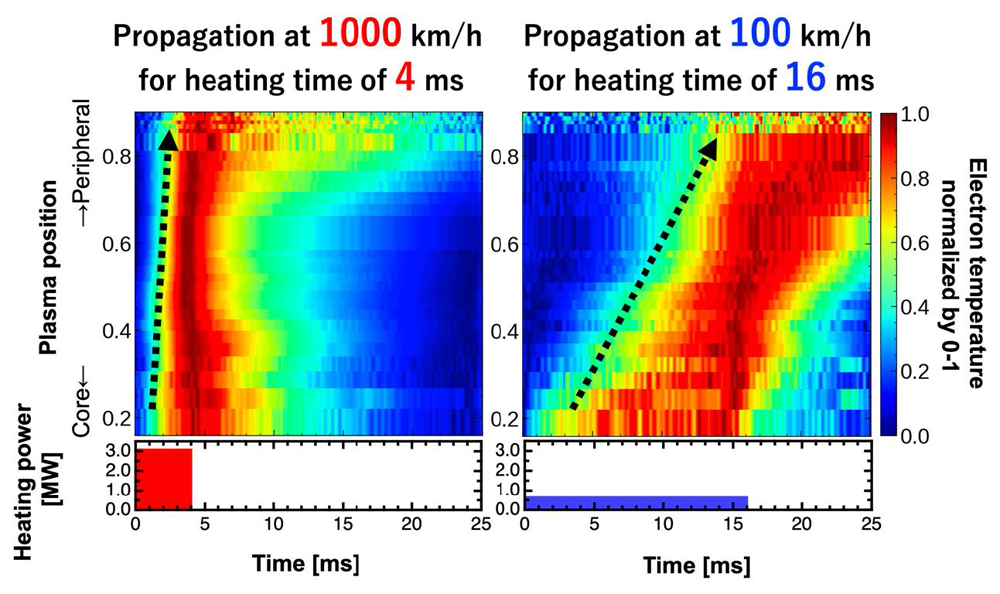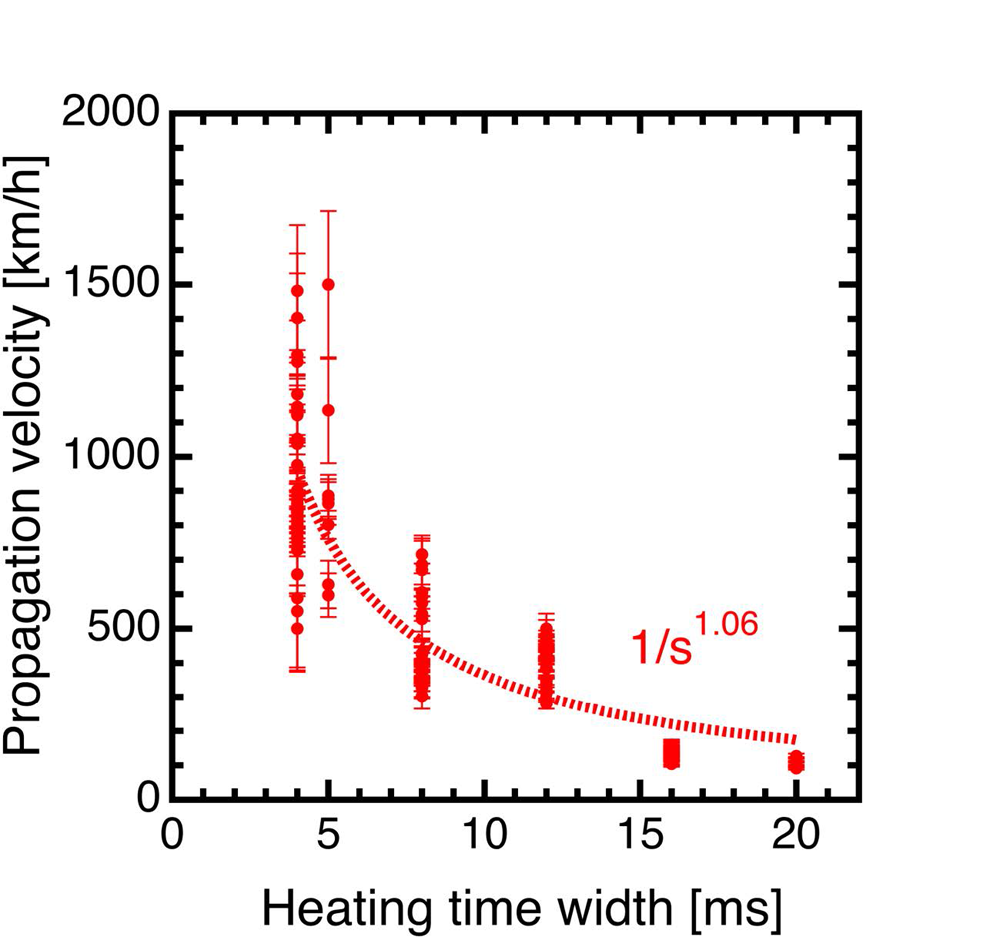Accelerated Plasma Heat and Turbulence Transfer through Short-Time Heating
The Large Helical Device (LHD) has been used to study the propagation of heat and turbulence in plasma, and it was found that heat-transfer speed increases with shorter heating times. It was also observed that temperature changes and turbulence propagate almost simultaneously. This phenomenon is crucial for understanding how energy moves in plasma. These findings provide valuable insights for stable plasma control in future fusion reactors.


Fusion power generation is expected to be a future source of clean and sustainable energy. To realize fusion, it is essential to maintain and control extremely high temperature plasma in a stable condition. This requires an accurate understanding, prediction, and control of heat and turbulence movements within the plasma. In particular, it is important to understand how changes in plasma density and temperature affect heat transfer.
In this study, the Large Helical Device (LHD) was used and a method called Electron Cyclotron Heating (ECH) was employed to heat the center of the plasma. By varying the heating time, the speed of the heat propagation through the plasma was measured. Specifically, experiments were performed with ECH durations ranging from four to 20 milliseconds, observing the movement of the heat and turbulence within the plasma. This method allowed detailed observation of the heat and turbulence movements within the plasma.
Heat was found to propagate very rapidly through the plasma when applied in short time periods. For example, as shown in Figure 1, heat applied for a short duration of four milliseconds propagated at an unprecedented speed of approximately 1000 kilometers per hour, contrary to traditional theories. This demonstrates that the way heat is applied significantly changes the way it propagates in plasma.
It has also been observed that turbulence propagates along with the heat. Turbulence consists of small swirling motions that carry heat within the plasma. By observing the simultaneous movement of the heat and turbulence, a deeper understanding of the heat dynamics within the plasma was gained. In addition, it was found that the shorter the heating duration, the faster the heat propagated (see Figure 2). Understanding this relationship can lead to new methods for improving plasma stability. For example, applying heat for a short duration allows for faster heat spreading within the plasma.
This research is critical to the stable operation of future fusion reactors. In particular, new insights have been gained into controlling plasma even under unstable conditions. These findings will aid the design and operation of fusion reactors by providing effective methods for dealing with sudden changes in heat and turbulence. Future research will include more detailed experiments to deepen the understanding of heat and turbulence dynamics within plasma. Based on the knowledge gained, more advanced plasma control technologies will be developed.
This research was conducted by the research group led by Assistant Professor Naoki Kenmochi, Professor Katsumi Ida, and Associate Professor Tokihiko Tokuzawa at the National Institute for Fusion Science, in collaboration with Professor Daniel J. Den Hartog at the University of Wisconsin-Madison.
The research was published on June 6th, 2024 in Scientific Reports, an open access, multidisciplinary journal.
